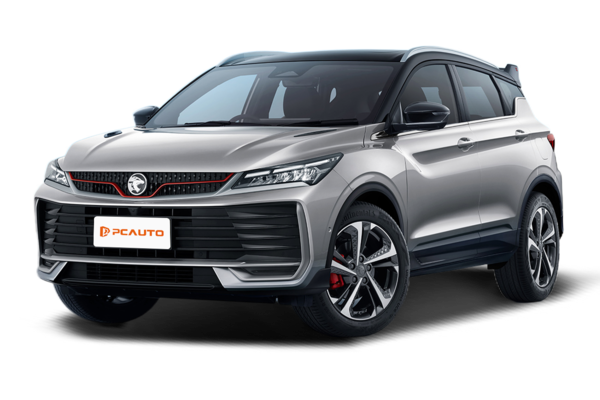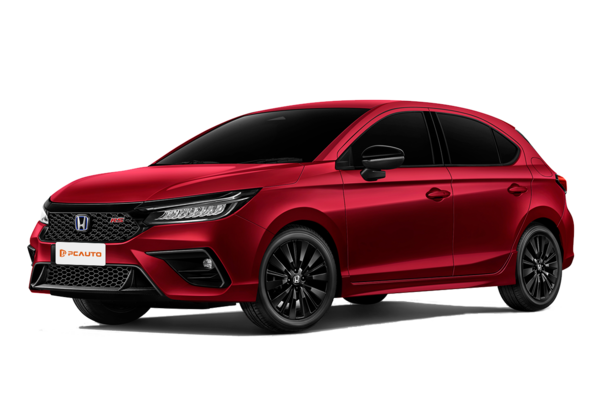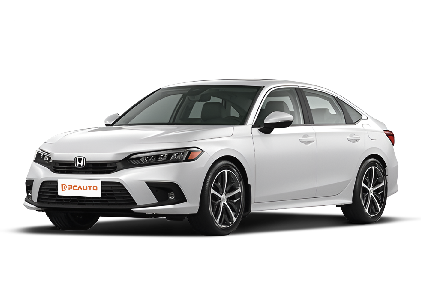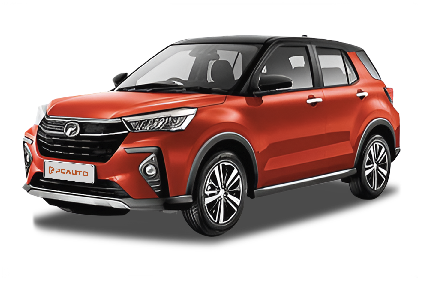Q
how to calculate car loan in malaysia
Calculating car loans in Malaysia boils down to four key factors: loan amount, interest rate, loan tenure, and monthly instalments. The go-to formula is: Monthly Instalment = [Loan Principal × Monthly Interest Rate × (1 + Monthly Interest Rate)^Loan Tenure in Months] ÷ [(1 + Monthly Interest Rate)^Loan Tenure in Months - 1]. Here, the interest rate needs to be converted to a monthly rate (annual rate divided by 12), and the loan tenure is the loan period in years multiplied by 12. Let's break it down with an example: if you take a RM100,000 loan at a 3% annual interest rate over 5 years, that translates to a 0.25% monthly rate and a 60-month tenure. Crunching the numbers, your monthly instalment would be approximately RM1,796.
But wait, real-world calculations don't stop there. Banks often throw in processing fees, insurance, and other add-ons, which can bump up the total cost. Speaking of rates, car loan interest rates in Malaysia typically hover between 2.5% and 4%. Where exactly you fall in that range depends on the bank, your credit score, and any ongoing promotions they might be running.
Before signing on the dotted line, I’d strongly advise using an online loan calculator to get a ballpark figure of your monthly outlay. It’s also smart to shop around and compare packages from different banks. And don’t skip the fine print in the loan agreement—keep an eye out for things like early settlement penalties or variable interest rate clauses. These details can make a big difference in finding the financial arrangement that best fits your needs.
Oh, and let’s not forget the down payment. Usually, you’re looking at putting down 10% to 30% of the car’s price. A bigger down payment can lower your loan amount and, in turn, reduce the interest you’ll end up paying over time. So, if you can swing it, putting more upfront might save you money in the long run.
Special Disclaimer: This content is published by users and does not represent the views or position of PCauto.
Popular Models
Related Q&A
Q
What is the difference between 1l and 1.2 L engine?
The key difference between 1-liter (1L) and 1.2-liter (1.2L) engines comes down to displacement—the total volume of all cylinders in an engine, measured in liters. Generally, a larger displacement means more power and torque, so a 1.2L engine will likely feel stronger during acceleration, highway driving, or when tackling hills with a load. That said, it’ll also drink a bit more fuel compared to the 1L.
The 1L, being smaller, prioritizes fuel efficiency, making it a smart pick for city commuting or everyday runs. On the flip side, the 1.2L’s extra performance often means higher manufacturing costs, which might bump up the car’s price tag. Plus, the 1L’s compact size fits better in smaller or budget-friendly models.
Your choice really hinges on driving needs: go for the 1.2L if you regularly hit the highway or want more grunt, but stick with the 1L if you’re mostly urban-bound and watching fuel bills. Oh, and don’t forget—tech like turbocharging or variable valve timing can squeeze near-equal performance from smaller engines these days, so specs alone don’t tell the full story. Always check how the engine’s tuned.
Q
Is 2000cc the same as 2 litres?
Yes, 2000cc and 2 liters refer to exactly the same engine displacement. "cc" stands for cubic centimeter, and since 1 liter equals 1000 cubic centimeters, 2000cc is simply 2 liters – just different ways of saying the same thing.
In the automotive world, engine size is typically labeled in either liters (L) or cubic centimeters (cc). You'll see things like 1.5L or 1500cc, 1.8L or 1800cc – all describing the total cylinder volume. Generally, a larger displacement means more power, though often at the cost of higher fuel consumption.
That said, while displacement is a key spec, it doesn’t tell the whole story. Factors like turbocharging, cylinder count, and fuel injection systems also play a huge role in performance. So you can’t judge an engine purely by its size.
Also worth noting: different markets have their own preferences – some regions lean toward liters, others use cc more often. But at the end of the day, they’re measuring the exact same thing.
Q
Why is engine capacity measured in litres?
Engine displacement is measured in liters because it's intuitive and universally recognized. As a unit of volume, liters directly represent the total working capacity of all cylinders, making it easier for consumers to compare the power potential of different models—for instance, a 1.5L engine typically delivers more power but higher fuel consumption than a 1.0L.
This standardized approach traces back to early European automotive engineering, where engineers used total piston displacement (swept volume) to gauge performance potential. The metric system, with liters, simplified calculations and cross-comparisons.
That said, modern turbocharging has complicated the link between displacement and power. A 1.4T engine, for example, might outperform a traditional 2.0L naturally aspirated unit. So when car shopping, it’s wise to also check peak horsepower and torque figures.
On a practical note, displacement still affects road tax and insurance costs in many used-car markets, though real-world fuel efficiency hinges more on driving habits and engine tech.
Q
Which car has the highest engine capacity?
The Dodge Viper SRT Final Edition currently holds the title of the largest-displacement production car in the world, packing an 8.4-liter V10 naturally aspirated engine that delivers a robust 645 horsepower. This American muscle car is renowned for its massive displacement and rear-wheel-drive setup.
In local markets, while such high-displacement models are relatively rare, it’s worth noting that engine size doesn’t always equate to performance. Modern turbocharging tech allows smaller engines to punch above their weight—for instance, a tuned 2.0-liter turbocharged engine can match the output of a 3.5-liter naturally aspirated unit.
Plus, with tightening emissions regulations, many automakers are shifting toward hybrid systems to balance power and eco-friendliness. The future may see big-displacement engines phased out in favor of efficient turbocharged or electrified setups. But for now, they still have a loyal following among drivers who crave raw, unfiltered performance.
Q
What is a good engine capacity for a car?
The ideal engine displacement for your car really depends on your daily needs and driving habits.
If you mostly drive in the city, a smaller engine—say, 1.5L to 1.8L—is more than enough. These engines are fuel-efficient, cheaper to maintain, and great for stop-and-go traffic. You’ll find this setup in a lot of Japanese cars or locally assembled models.
Now, if you frequently hit the highway or want more power, a mid-range engine (2.0L to 2.5L) makes more sense. It delivers better acceleration and stability at higher speeds, which is ideal for family cars or occasional long trips.
For those who crave performance or often carry heavy loads, a bigger engine—3.0L and above—will give you that extra punch. But keep in mind, fuel consumption and road tax costs jump noticeably.
Here’s the thing, though: turbocharging has changed the game. Smaller turbo engines—like a 1.4T or 1.5T—can deliver power close to larger engines while staying relatively efficient. And if you’re open to alternatives, hybrid systems use electric motors to take some load off the engine, reducing the need for big displacements.
My advice? Think about your budget and how you actually use the car. Also, factor in annual road tax and insurance—those costs can vary a lot depending on engine size.
Q
What is the engine capacity?
Engine displacement refers to the total volume swept by all the pistons in an engine's cylinders as they move from top to bottom dead center. It's typically measured in liters (L) or cubic centimeters (cc)—like 1.5L or 1500cc. Displacement directly impacts an engine's power output and fuel efficiency: generally, bigger displacement means more power but also higher fuel consumption.
These days, you'll find engines ranging from tiny 1.0L units in compact cars to 3.0L+ beasts in high-performance models. Thanks to turbocharging, smaller engines can now deliver power close to their larger-displacement counterparts. While hybrids and EVs don't use displacement to gauge performance, it remains a key spec for traditional combustion engines.
When car shopping, don't just focus on displacement—consider factors like transmission tuning and vehicle weight too. Many modern small-displacement turbo engines strike a solid balance between power and efficiency, making them great for daily driving.
Q
How much is a fuel tank for a car?
The cost of a car fuel tank can vary quite a bit depending on the model, material, and brand. For regular family cars, you’re usually looking at between RM500 to RM2,000. If it’s a metal tank or for a luxury vehicle, expect to pay more.
Tank prices also depend on capacity and design complexity—like larger SUV tanks or specialized hybrid fuel tanks, which tend to be pricier. On top of the tank itself, labor costs for replacement can range from RM200 to RM500, depending on the workshop’s rates.
Always go for OEM or certified aftermarket tanks to ensure safety and compatibility. It’s also a good idea to check your tank regularly for leaks or rust, especially during the rainy season when humidity can speed up corrosion. This helps extend its lifespan and avoids safety risks. If you notice a sudden drop in fuel efficiency or smell gasoline, it could be a tank issue—get it checked at a professional repair shop ASAP.
Q
What happens when the fuel tank is empty?
When the fuel tank is completely empty, the vehicle will stall due to lack of fuel supply, causing the engine to lose power. At this point, steering and brake assist systems will gradually weaken, requiring the driver to safely pull over immediately.
Modern fuel pumps rely on gasoline for cooling, so driving on empty for extended periods can lead to overheating and costly damage. Some models trigger warning lights and display remaining range when fuel is critically low, but relying solely on these estimates is risky—actual consumption varies based on road conditions, AC usage, and other factors.
A good rule of thumb? Refuel before the gauge dips below a quarter tank to avoid sucking up debris from the bottom of the tank. If you do get stranded, roadside assistance can deliver emergency fuel, though mixing different octane grades may affect engine performance—especially in high-performance turbocharged cars.
Pro tip: Regularly check your fuel filter to prevent clogs, and maintaining at least half a tank in humid climates helps minimize condensation buildup, which is crucial for tropical regions.
Q
What SUV has a 116 inch wheelbase?
Currently, there aren’t many SUV models on the market with a wheelbase stretching to 116 inches (around 2,946 mm). But one that stands out is the Ford Mustang Mach-E—its wheelbase hits exactly 116 inches. This all-electric SUV has drawn plenty of attention with its sporty design and solid range.
Then there are larger SUVs like the Lincoln Nautilus (roughly 117-inch wheelbase) and the Cadillac XT6 (about 116.7 inches), which come close in size, offering more cabin space and upscale features.
Wheelbase is a key factor in determining interior room—longer usually means better legroom and more stable handling, though it can also hurt maneuverability and parking ease. So when shopping for an SUV, don’t just focus on wheelbase; consider performance, specs, and how you’ll actually use the vehicle.
Q
What SUV has a 119 inch wheelbase?
Currently, SUVs with a 119-inch (approx. 302 cm) wheelbase include full-size models like the Chevrolet Tahoe and GMC Yukon. These vehicles typically offer three-row seating and robust powertrains, making them ideal for family trips or situations requiring ample space.
Wheelbase is a key factor in determining interior room. A longer wheelbase enhances ride comfort and high-speed stability, though it can reduce maneuverability on tight roads. If you're considering one of these SUVs, also pay attention to overall length and turning radius to ensure it suits your local driving conditions.
Full-size SUVs may not match the fuel efficiency of smaller crossovers, but their V8 or hybrid powertrains deliver superior towing capacity—perfect for those who need to haul heavy loads. Luxury brands may offer models with similar wheelbases, but expect higher prices and more premium features. Weigh your budget and needs before deciding.
Popular Cars
Model Year
Car Compare
Car Photo
Latest Q&A
Q
Is the 1.5 L 4 cylinder?
Yes, a 1.5L engine is typically a 4-cylinder setup—the most common configuration for small to mid-sized displacements. This layout strikes a solid balance between fuel efficiency and power output, making it ideal for daily commuting and family use. Four-cylinder engines are relatively simple in design, cheaper to maintain, and benefit from proven technology that delivers smooth operation. You'll find this configuration widely used by mainstream brands like Honda, Toyota, and Mazda. While there are some 1.5L 3-cylinder options out there, the 4-cylinder remains the go-to choice, especially in models prioritizing durability and refinement. If you're shopping for a 1.5L-powered car, pay attention to specific tech features—turbocharging, direct injection, etc.—as these can significantly impact real-world driving dynamics and fuel economy.
Q
What is the displacement of a V8 engine?
The displacement of a V8 engine typically ranges from 4.0 to 6.2 liters, depending on the vehicle and its purpose. For example, high-performance sports cars often pack a 5.0-liter or larger V8, while trucks and SUVs usually stick with something between 4.3 and 5.7 liters. Known for its brute power and smooth operation, the V8 is a go-to for acceleration and towing—though its thirst for fuel is something buyers always weigh up.
These days, turbocharging has changed the game. Smaller-displacement V8s (like a twin-turbo 4.0L) can now deliver big-block performance with slightly better efficiency. And let’s not forget the sound—few things beat the roar of a tuned V8 exhaust, a big reason why enthusiasts love ‘em.
If you’re into V8s, keep an eye on local used car listings or auto shows—you’ll often spot some gems there.
Q
What is the difference between 1l and 1.2 L engine?
The key difference between 1-liter (1L) and 1.2-liter (1.2L) engines comes down to displacement—the total volume of all cylinders in an engine, measured in liters. Generally, a larger displacement means more power and torque, so a 1.2L engine will likely feel stronger during acceleration, highway driving, or when tackling hills with a load. That said, it’ll also drink a bit more fuel compared to the 1L.
The 1L, being smaller, prioritizes fuel efficiency, making it a smart pick for city commuting or everyday runs. On the flip side, the 1.2L’s extra performance often means higher manufacturing costs, which might bump up the car’s price tag. Plus, the 1L’s compact size fits better in smaller or budget-friendly models.
Your choice really hinges on driving needs: go for the 1.2L if you regularly hit the highway or want more grunt, but stick with the 1L if you’re mostly urban-bound and watching fuel bills. Oh, and don’t forget—tech like turbocharging or variable valve timing can squeeze near-equal performance from smaller engines these days, so specs alone don’t tell the full story. Always check how the engine’s tuned.
Q
What does 5.7 liter engine mean?
A 5.7-liter engine refers to a total displacement of 5.7 liters, meaning all cylinders combine for a total working volume of 5,700 cubic centimeters. Generally, a larger displacement allows the engine to take in more air and fuel, delivering stronger power and torque—making it ideal for performance-oriented vehicles or those built for heavy-duty work, like pickup trucks, full-size SUVs, or muscle cars.
In the local market, you’ll often find big-displacement engines in American-branded vehicles. These engines excel at high-speed cruising or towing heavy loads, though they do come with higher fuel consumption and increased running costs.
Thanks to advancing technology, many automakers now use turbocharging or hybrid systems to help smaller engines deliver power comparable to older, larger naturally aspirated units—like how some modern 2.0L turbocharged engines can match the performance of older V6 engines while being far more fuel-efficient.
If fuel economy is a priority, a smaller turbocharged or hybrid model might be the better choice. But if you value the smooth, raw power of a classic big-block, a 5.7-liter engine remains a timeless option.
Q
What liter engine is a V6?
The displacement of a V6 engine isn't set in stone—it typically ranges between 2.5 and 4.0 liters, depending on the vehicle's design and purpose. For example, a family sedan might pack a 2.5L or 3.0L V6, while performance cars or pickups could go for 3.5L or larger. Displacement directly impacts power output and fuel economy: bigger usually means stronger, but thirstier too.
Named for its six cylinders arranged in a V-shape, the V6 strikes a sweet spot—delivering smoother operation and better balance in a compact package compared to four-cylinder engines, while being more fuel-efficient than V8s. That's why it's a popular choice for midsize sedans and SUVs.
These days, with turbocharging becoming commonplace, smaller-displacement V6 turbos can match the punch of older, bigger engines while sipping less fuel. Choosing one? Think about your daily needs. A 2.5L works fine for city commutes, but if you're frequently hitting the highway or towing, step up to 3.0L or above.
View MoreLatest News

Euro NCAP releases final batch of 2025 crash test results: Four models, including the facelifted Mazda CX-5, receive five-star ratings
Kevin WongDec 19, 2025

Porsche 718 models will be available in both electric and fuel-powered versions
JamesDec 19, 2025

Wuling Bingo EV 2025 model launched in Malaysia, adding a strong contender to the entry-level pure electric market
AshleyDec 19, 2025

Jaecoo J5 is planned to be launched in Malaysia in the first quarter of 2026
JohnDec 19, 2025

10 MPVs Everyone Wants, But Haven't Been Launched in Malaysia
LienDec 19, 2025
View More




 Cars
Cars














